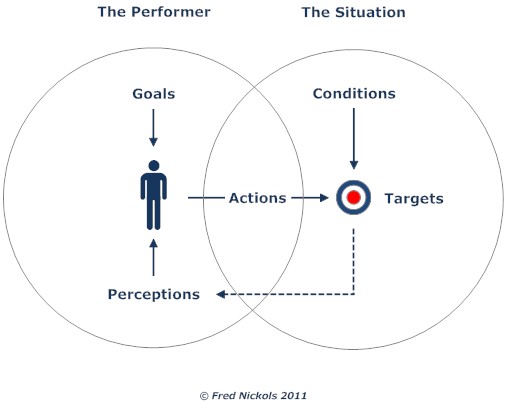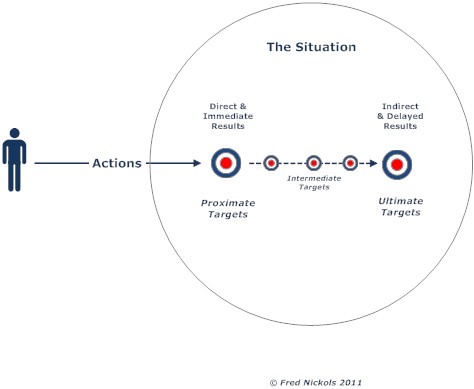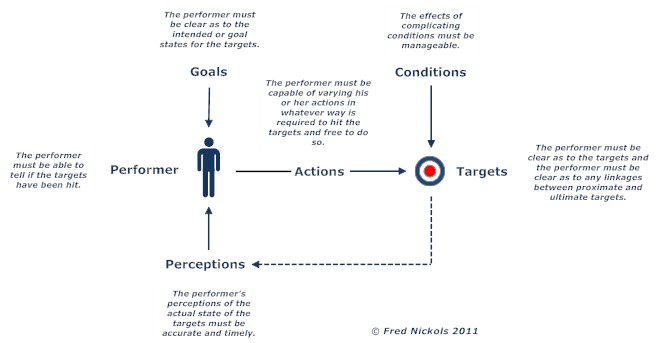Second, management needs to deal with people as self-managing agents, as people who are capable of and perfectly willing to act on their employer's behalf and in their employer's best interests.
Third, management needs to re-educate itself regarding the basic nature of human behavior and performance. It needs to dismiss the erroneous stimulus-response-reinforcement view of human behavior and it needs also to dismiss the equally erroneous cognitive view of human behavior as programmed and programmable. Instead, it should adopt of view of people as "living control systems" - as closed-loop, feedback-governed entities who can achieve stability in results under unstable conditions.
Fourth, with an appropriate view of people in mind, management needs to seriously re-examine and re-engineer the practice and the practices of management. For one thing, it's not enough to listen to people; you must also act on what they tell you. People must see that what they say makes a difference. If not, they simply won't tell you what they think. For another, you must devote considerable time and energy to assuring people that they can in fact operate in a more or less autonomous fashion. For yet another, you must negotiate with employees the same way you would with any supplier. Beyond that, you must be open to the possibility that the employee will have better ideas than management, including yourself.
Finally, despite all the changes that have occurred, the fundamental task of management has not changed: It is still a matter of concentrating and channeling organizational energy along productive lines. What has changed is how that concentrating and channeling is accomplished - and who does it.
- Improved performance of people, management and organizations
- Reduced costs of poor performance, loss of talent, and missed goals and objectives
- Increased levels of participation, involvement, commitment and engagement
- Select a test bed - an organizational unit where improvements in performance would have significant payoffs.
- Find a manager/executive who is willing to lead, shepherd and support a year-long experiment with new and different ways of managing, improving and engineering individual and organizational performance. If necessary, replace the current leader of the TBU.
- Educate the managers and the employees in this test bed unit (TBU) about the true nature of people as "living control systems."
- Equip the managers and the employees in this test bed unit (TBU) to approach the issues of performance from this new and different perspective.
- Provide ongoing support and encouragement for this experiment - from the very top of the organization.
- At the end of the first year, evaluate the impact.
- Assuming the results in step 6 are favorable, begin the ultimate task of weaving a performance engineering capability into the fabric of the organization, equipping all employees - from the CEO to the clerks - with the ability to engineer, manage and improve their own performance.
Credit for this particuar effort to apply PCT in a practical vein to human behavior and performance in the workplace belongs to me, Fred Nickols, and also to Bill Powers for the support and encouragement he's given me over a period of many years.



- Log in to post comments



You need to register in order to submit a comment.